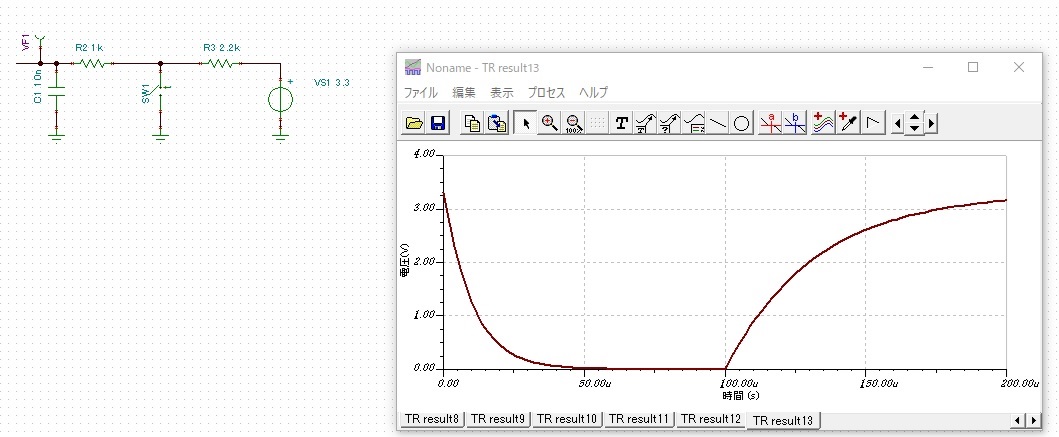Other Parts Discussed in Thread: TINA-TI
Hi Experts,
My customer is using below GPIO input circuit. Below is the TINA-TI simulation wave.
The input signal of above simulation data shows the tau is around 50us both for rising and falling. When the customer measures it, the time constant(tau) is hundreds nanoseconds and it is so fast transition.
The used ports are PD0, PD1, PD2 and PD3. These ports are set to input and internal PU and PD are disabled.
Do you have any idea what causes this fast transition?
Regards,
Uchikoshi


